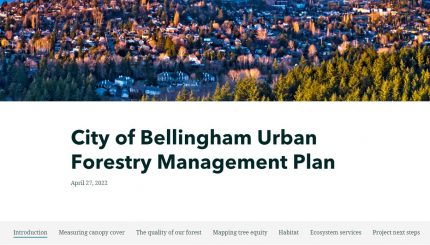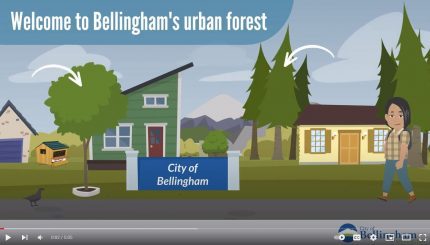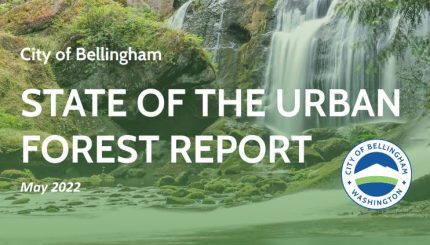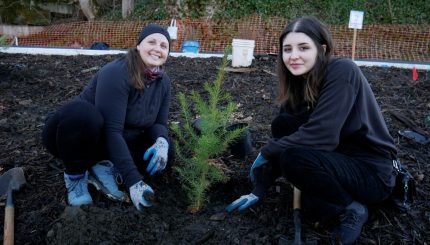The City of Bellingham is creating an Urban Forestry Management Plan (or Urban Forest Plan). The purpose of the Plan is to create a strategic plan that helps maintain a healthy and desirable urban forest through well-coordinated, consistent, efficient, and sustainable long-term urban forest management. See below to learn more about Bellingham’s urban forest.
Project Status – April-May 2024
Phase 3 (Plan Development) is underway. Share your input!
Our draft Plan is available for your review and comments. This draft includes all the valuable comments our community has shared with us so far during the development of this Plan. Share your thoughts with us by participating in a virtual input session on May 8, participating in one of three in-person technical sessions, or taking our online survey through May 15. Learn more on our Engage Bellingham page.
City Council presentations
City staff presented the draft Plan to Bellingham City Council on Monday, April 15. This same day, staff also shared a presentation about new Community Tree Programs we are launching to help grow our urban forest and support tree planting on private and public property. Presentation slides and recordings for these are available under the Council Presentations section at the bottom of this page.
Please sign up to receive email updates about the UFMP process and feedback opportunities.
More Information
Learn about Bellingham’s urban forest through the following resources.
Additional Information
Reports and Resources
- Draft Urban Forest Plan, April 2024
- Phase 2 Engagement Summary Report, 2022
- Phase 2 Engagement Summary Appendices, 2022
- Open House presentation for public input, May 2022
- Canopy and Forest Structure Analysis Summary Report, 2021 (updated Nov. 2022)
- Wildlife Corridor Analysis Report, 2021 (updated Nov. 2022)
- Wildland Urban Interface Report, 2021
- State of the Urban Forest Report, 2022
- Urban Forest Storymap, 2022
- Urban Forestry Management Plan Video, 2022
- FAQ About the Forest Structure and Wildlife Corridor Methodologies, 2022
Council Presentations
2021
- Urban Forestry Management Plan Update, Council Presentation 1/25/2021
- Urban Forestry Management Plan Update, Council Presentation Slides 8/30/2021
- Urban Forestry Management Plan Update, Council Presentation Video 8/30/2021 – Item 4
2022
- Urban Forestry Management Plan Update, Council Presentation Slides 11/21/2022
- Tree Regulations & Enforcement, Council Presentation Slides 4/25/2022
2023
- Urban Forestry Management Plan Update, Council Presentation Slides 9/25/2023
- Urban Forestry Management Plan – Phase 3, Canopy Cover Target Recommendation 11/20/2023
2024
- Urban Forest Plan – Phase 3, Draft Plan Council Presentation, 4/15/2024
- Community Tree Programs Council Presentation, 4/15/2025
Contacts
Analiese Burns
Habitat and Restoration Manager
Public Works Natural Resources
acburns@cob.org
(360) 778-7968






